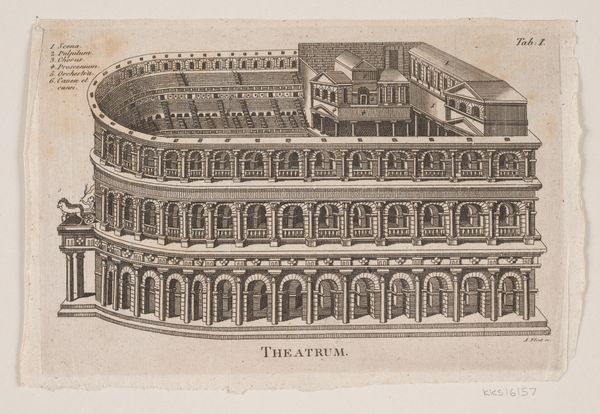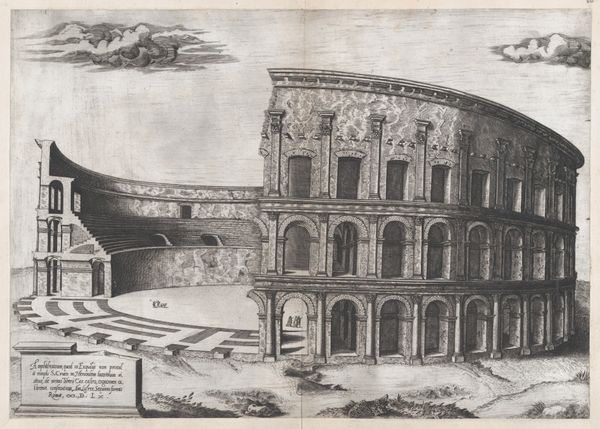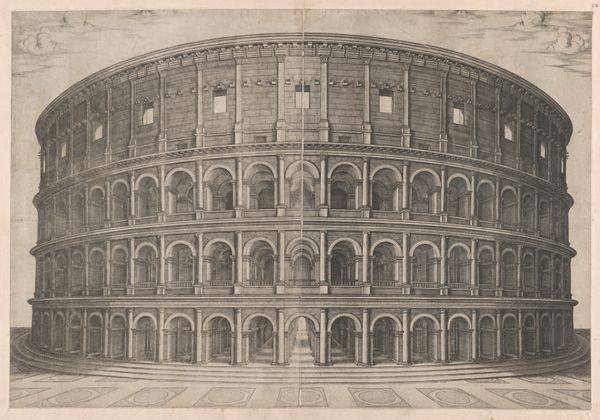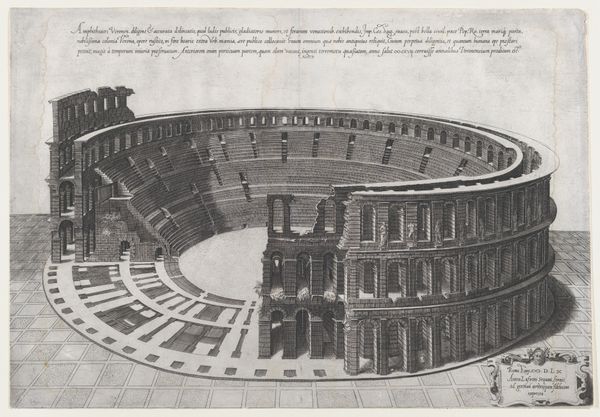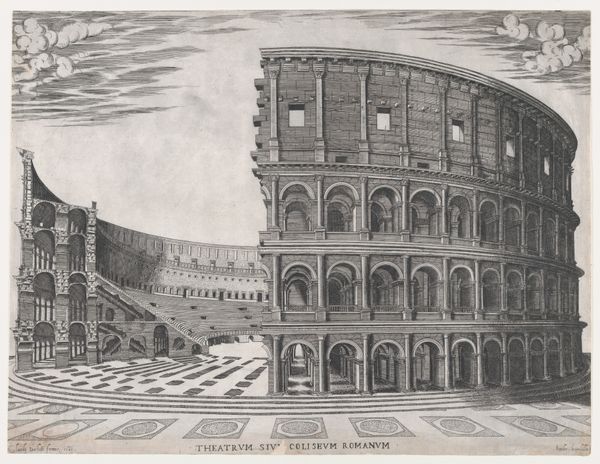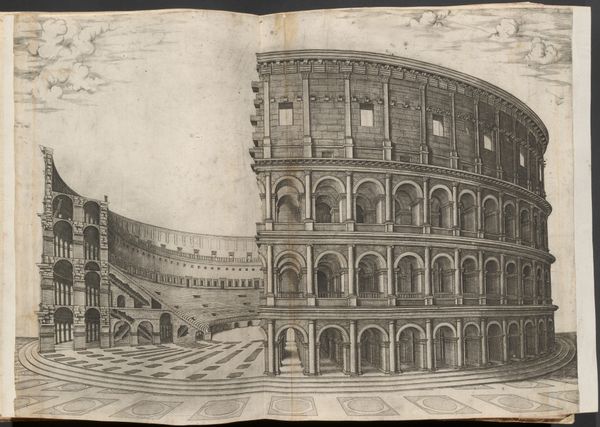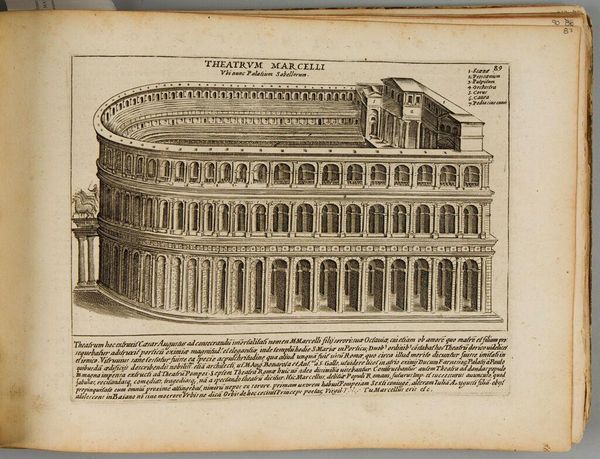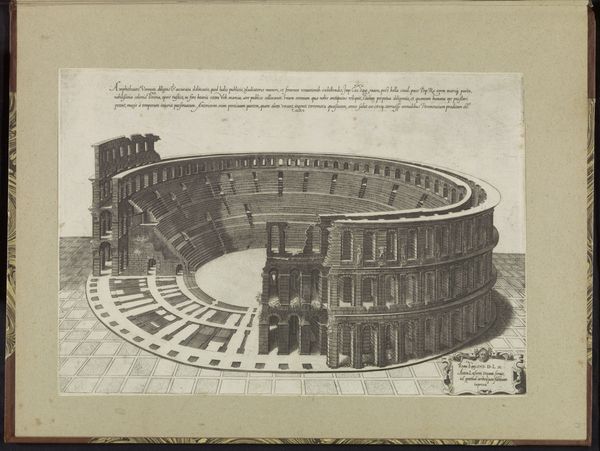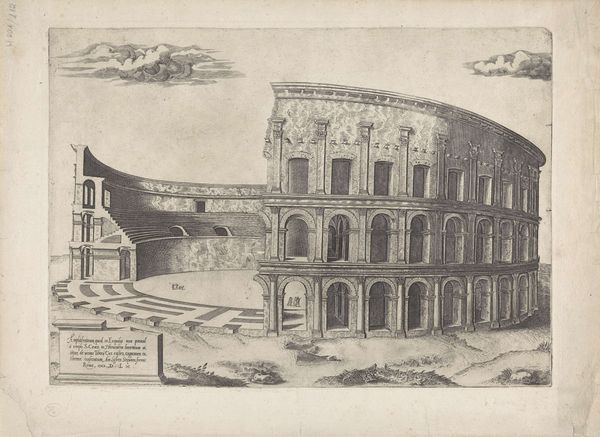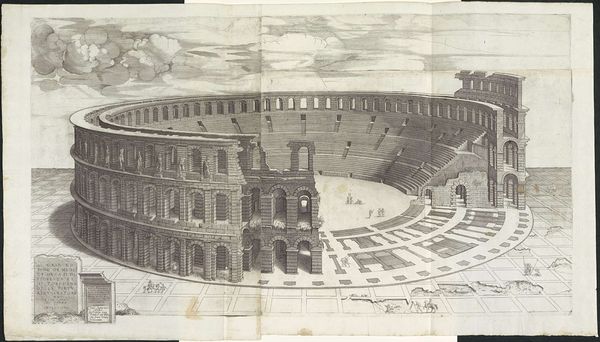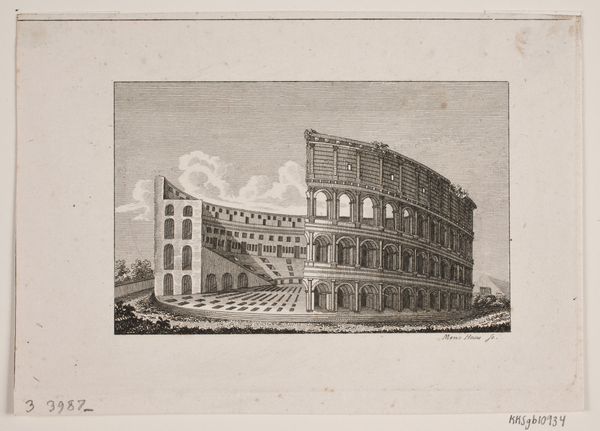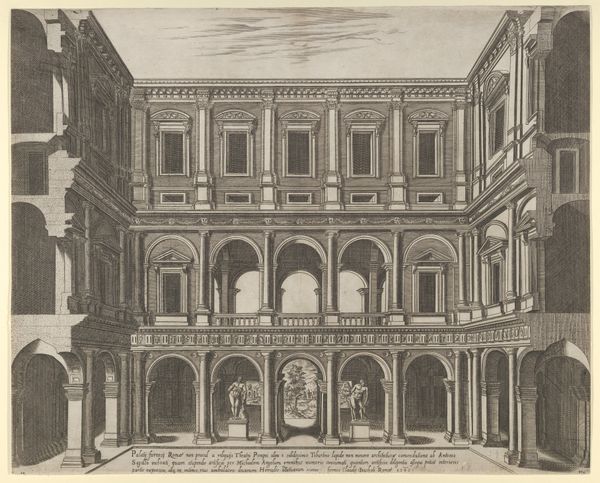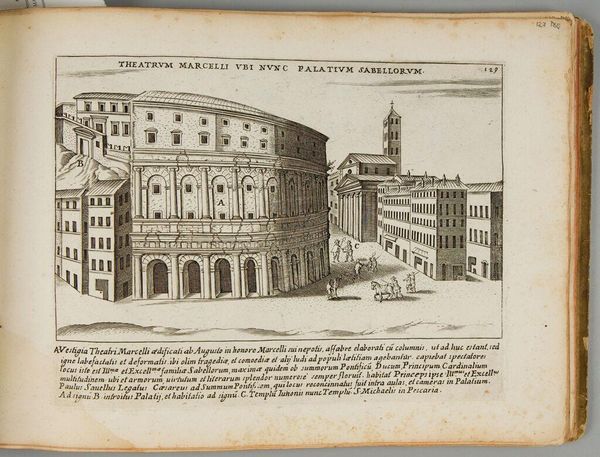
Speculum Romanae Magnificentiae: Theater of Marcellus 1530 - 1580
0:00
0:00
drawing, print, engraving, architecture
#
drawing
# print
#
perspective
#
ancient-mediterranean
#
engraving
#
architecture
Dimensions: sheet: 14 5/16 x 21 11/16 in. (36.4 x 55.1 cm)
Copyright: Public Domain
Curator: Pirro Ligorio’s print, part of the *Speculum Romanae Magnificentiae,* offers an intriguing view of the Theater of Marcellus, circa 1530 to 1580. I'm particularly struck by the precision of the lines used in this engraving. Editor: Immediately, I am drawn to the structure’s stark, imposing presence. It communicates an air of grandiose authority, reflective of its cultural function, as a stage for controlled narratives in a burgeoning empire. There is also a strange ghostliness because this an image *of* an image. Curator: That ghostliness you describe may come from the engraving's remarkable linear perspective and play of light and shadow. Note how the artist uses delicate hatching to suggest depth and volume. The contrast is sharp. It invites the eye to consider the geometrical purity of the amphitheater's design. Editor: Agreed. I see in its precise rendering a glorification of Roman imperial engineering. Ligorio presents it as a feat of dominance over nature and human subjects—the tiers could also represent a visual hierarchy of power. How were these spaces allocated within the social framework? Curator: While a literal translation to lived space is inaccessible from strictly within the frame, note how the artist employed meticulously-rendered architectural details, such as the arcaded facades and Corinthian columns, and examine the formal vocabulary used to evoke a sense of classical grandeur. It echoes ancient aesthetics through line, shape, and composition. Editor: Absolutely, though this grandeur surely comes at the expense of those outside of the “narrative”, or physically made invisible and powerless in architectural constructions and visual representations. These choices seem deliberate, reflecting prevailing societal biases that further cement specific ideologies and maintain existing hierarchies. The performance space, in its original intent, must have echoed and amplified similar inequities. Curator: An astute reading. As an image, Ligorio's print reminds us of how the Renaissance sought to resurrect and reinterpret the classical world. In that way, it does provide a script and a setting—an interesting reflection in ink. Editor: Yes, exactly, and thinking about spectatorship – how can we rewrite a more inclusive narrative into that empty, dominating stage, by centering more marginalized perspectives today?
Comments
No comments
Be the first to comment and join the conversation on the ultimate creative platform.

